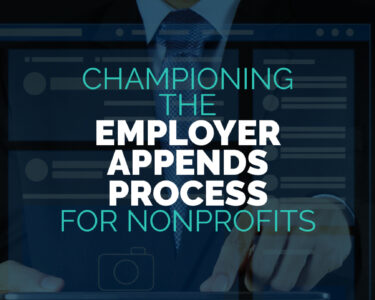Trust-based philanthropy is the phrase of the moment, and all those associated with the Trust-Based Philanthropy Project deserve tremendous credit for the way they have influenced grantmakers. As we at CEP have documented in a series of research reports, foundations’ processes are, on average, more streamlined than they were five years ago. There is also considerable evidence that there has been a meaningful uptick in the provision of general operating support by foundations.
This is very good, because it frees nonprofits up to focus on what matters and provides them the flexibility to allocate resources where they are most needed. This is even more important in the wake of the election. Organizations working on issues such as climate change, racial equity, education, or immigration will be in a much more challenging, and volatile, context. They’ll need the flexibility that long-term, unrestricted support offers.
There is a long way yet to go, despite the progress. The lack of flexible funding, and especially long-term flexible funding, remains among the greatest frustrations of nonprofit leaders — and they tell us, again and again, it impedes their effectiveness in pursuing the very goals funders want them to pursue. We see this in the suggestions nonprofits make when we at CEP survey them, whether through our Grantee Perception Report (GPR) or in research efforts.
I think the trust-based movement has been incredibly effective and I am thrilled that it, along with the self-reflection about practices that the pandemic spurred, has led to more change in philanthropic practice in recent years than in previous decades.
Why then, did I blurt out, on a just-released episode of our Giving Done Right podcast that, while I appreciate and generally agree with the tenets of the movement (though not every one of them makes sense in every context), I don’t actually love the term trust-based philanthropy, at least not as I sometimes hear it thrown around anyway? Or, I added for good measure, any attempt to reduce effective philanthropy to a single adjective? Granted, it was a rambunctious episode (recorded well before the election) in which my colleague Grace Nicolette and I were interviewing our other colleagues Elisha Smith Arrillaga and Kevin Bolduc, and we all got a little silly, so I contemplated asking our producer to edit it out, for fear of cancellation.
But then I decided to be a grown up and stand by what I said. The point I was trying to make is this: any effort to boil down good philanthropy to a single word (maybe even “effective!”) — or even a single conceptual framework — inevitably misses vital nuance and context.
I think that some who have objected to trust-based philanthropy have seized on the term to somehow suggest, wrongly, that the choice is binary: either trust or strategy, trust or results, or even trust or rigorous evaluation. But these are false choices, as the folks involved in promoting trust-based philanthropy have pointed out repeatedly and thoughtfully. Bridgespan makes this point, too, in a discussion paper on trust-based philanthropy published earlier this year, arguing that trusting relationships are essential as different parties pursue shared goals. It’s about results and impact, not trust for the sake of trust.
I don’t agree entirely with the Bridgespan piece, which draws too heavily on “lessons” from the world of investing which, as I have ranted over the years, is a bad analog for philanthropy. But, aside from that part, I found it a thoughtful reflection and agreed very much with the authors when they said this: “In our minds, the fullest expression of trust-based philanthropy’s goals is when it creates space for both parties’ relative strengths and assets to fully contribute toward a shared impact objective. Solving knotty, persistent problems — the core of social innovation — is a team sport.”
What’s the issue, then?
First, we need to be clear that trust has to be earned, by both parties over time, and we should be realistic that, quite frankly, it isn’t always. Even if those cases when trust is betrayed are the exceptions, as I think they are, they matter.
It’s true that I have argued repeatedly that nonprofits don’t get the respect they deserve and that too many funders adopt a patronizing, even paternalistic stance with nonprofits. Even so, it’s not clear to me that funders should totally trust a nonprofit they just learned about, nor is it clear to me nonprofits should totally trust a funder they just met. They should form a relationship, which is a basis for establishing trust, as I think the folks behind the trust-based philanthropy movement (but not necessarily all those who throw the term around) would agree.
Second, we need to be able to hold two thoughts in our minds at the same time: that trust matters, but that it isn’t all that matters. Strategy matters. Implementation of strategy matters, too. I have worked with program officers I trust who have driven me mad with their utter flakiness or bad communication. Were they trustworthy people? For sure. Were they honest? Absolutely. Were they good people, and maybe even deeply introspective about their privilege and power? Yes. Were they good at their jobs — or at helping me as I did mine? Not so much.
Third, and related, boiling things down to trust — or any one thing — risks obscuring the other dimensions of what matters most. The relationship, how the two parties work together in pursuit of shared goals, is about more than just trust.
Let me say a bit more about this last point. A strong relationship between funders and nonprofits has a number of elements. Indeed, in our work at CEP, we see five survey items that are correlated but distinct that our research efforts suggest define the relationship from the point of view of the grantee: fairness of treatment; comfort approaching the grantmaker if a problem arises; responsiveness of grantmaker staff; clarity of communication of the grantmaker’s goals and strategy; and consistency of information provided by different communication resources. These form a “relationships factor” that has been a core component of the feedback grantees provide to funders through CEP’s GPR.
In our analysis of grantee survey data, we have been able to isolate the most crucial predictors of that relationships factor. Two concepts are the most important, statistically: understanding of grantee organizations and the context in which they work; and transparency of the grantmaker. Three other items contribute, though not to the same degree, to the quality of relationships: helpfulness of the selection process; openness to ideas about strategy; and low pressure on the nonprofit to modify its priorities to receive funding.
These results, published in 2017 and based on analysis of tens of thousands of nonprofits’ perspectives, suggest that relationships are not about any one single thing. Since that time, we have added some questions that explore the concept of trust, and I’m eager for us to repeat this analysis at some point to see how, if at all, those items change the equation.
Our past research findings also suggest that strong relationships can exist without all of the practices sometimes discussed as “core” to the approach. If what you’re looking for is a strong relationship with those you fund, it isn’t necessarily the case, for example, that you need to offer non-monetary support to your grantees. The provision of such support doesn’t surface as a predictor of relationships, or as especially important relative to other areas we cover in our grantee survey. Can it be a powerful lever for some funders? For sure. But, as any nonprofit leader will tell you, this is not something any grantee would want all their funders to seek to do. It would be impossible to manage.
Practices need to vary depending on goals and context. Will funders and nonprofits alike generally be more successful if grantees are provided much more multi-year general operating support than they typically are today? I think there is overwhelming evidence that the answer is yes. Are there also some circumstances in which it makes perfect sense to provide a program-restricted one-year grant? I think the answer to that is also yes — but somehow that too often gets lost in the conversation.
A good friend of mine and one of the leaders I most respect in the nonprofit sector recently told me we shouldn’t worry about semantics, given the positive change the trust-based movement has catalyzed and I totally take her point. But I think one way to counter the backlash to the trust-based concept — and there definitely is one based on the discussions I have with funders, anyway — is to actually embrace the nuance just a bit more.
Those advocating for funders to change will be more effective, in my view, if they are perhaps just a bit less dogmatic than what I sometimes read and hear — and a bit more inviting of an ongoing conversation and reasoned debate about effective (or whatever words we want to use) philanthropy. Because if ever there was a time when we need to be sure that we’re being nuanced in our thinking about what makes sense when, it is now.
Please don’t cancel me for saying so.
Phil Buchanan is president of CEP, author of “Giving Done Right: Effective Philanthropy and Making Every Dollar Count,” and co-host of the Giving Done Right podcast.
👇Follow more 👇
👉 bdphone.com
👉 ultraactivation.com
👉 trainingreferral.com
👉 shaplafood.com
👉 bangladeshi.help
👉 www.forexdhaka.com
👉 uncommunication.com
👉 ultra-sim.com
👉 forexdhaka.com
👉 ultrafxfund.com
👉 ultractivation.com
👉 bdphoneonline.com




